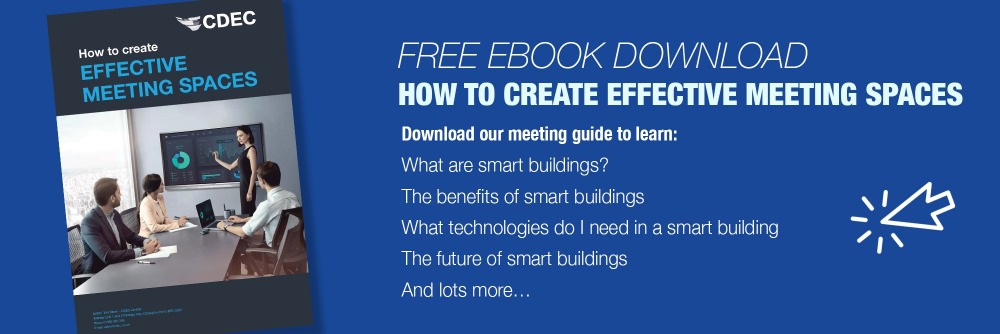The huge acceleration in workplace technology in recent years has made it difficult to know which kit genuinely has a positive impact on both employees and the bottom line, and which is less effective.
Changes to the idea of the workplace, the rise of flexible and remote working, and the need to communicate with people across the globe on a regular basis has hugely affected the kind of technology needed in the average office or meeting room.
Just a decade ago you could walk into pretty much any corporate environment and expect to see largely the same vision; employees sat at their own desk, working on their wired-in desktop computer with a phone by their side, their team around them and a boardroom on the top floor for meetings.
Fast-forward to the start of the ’20s and things have changed significantly.
To understand the technology needed in this new workplace, the first step is to acknowledge the changes that have taken place.
1. There’s no such thing as a workplace anymore
Just 10 years ago, the vast majority of office workers would commute into their place of work every day; technology would be largely static and aside from checking emails on a work BlackBerry, there wasn’t much demand for technology that enabled communication on the go.
Over the past decade however, the need to travel into the office has reduced with technology stepping in to provide a pretty good substitute. Communication solutions are available for every budget – from a good-enough video conferencing app to a fully kitted out conferencing suite.
2. Remote workers still want to feel part of the team
One major benefit of the rise in video conferencing applications is their ability to make remote workers feel included in team activities. More personal than a phone call, these apps are a quick and easy way for employees to keep in touch, no matter where in the world they may be.
While some people will be happy on a basic Skype or Hangouts call, technology has developed so far beyond this so as to create immersive, acoustically treated environments that follow speakers no matter where they may be in the room, enabling more natural conversations. For teams with large numbers of remote working, investing in a more advanced solution can make a huge difference, encouraging teams to communicate more regularly while making calls more efficient and less draining.
3. Flexible working is the new normal
In many industries, 9-5 is no longer the usual working day. Employees now often work from home or from more than one office, while travelling is the norm for many.
This can raise a number of issues when it comes to keeping in contact with team members and it is one factor behind the drive towards standardisation that many multinational organisations are now pursuing. By creating template meeting spaces that utilise the same technology, it becomes much easier for employees to walk into a room and intuitively understand how it works, no matter where they may be in the world.
4. Collaboration and community are increasingly valued
Another major change in working culture that has taken place over the past decade or so is the move towards a much less structured hierarchy.
Whereas in the past, employees would be in one area of an office and senior management would be in another – often safely hidden behind a closed office door – now teams are much more valued with everyone’s opinion important and specialist knowledge in demand. This has led to a growth in open plan spaces, informal meetings and the need for more communication in general as all voices count.
Research from the Stanford School of Business suggests that this more egalitarian approach can actually be more effective when it comes to handling crises or threats because everyone is invested in the business rather than feeling it is the job of senior management alone to handle such issues.
Again, technology should be tailored to each individual meeting space. Huddle rooms, for example, can be a cost-effective and useful way to ensure there is always space for people to catch up. As informal meeting spaces, they don’t have to include huge amounts of technology – communication and collaboration tools will be at the core and ease of use is a must.
5. Office environment and wellbeing have come to the centre
As Millennials continue to impact the workplace, working environment is now much more important when it comes to attracting and maintaining employees.
Having grown up with technology, Millennials are incredibly tech-savvy and they expect not just to see intuitive tech in their workplace, but to be able to utilise their preferred technology wherever they are to improve their work/life balance. This means being able to seamlessly access and share content while video calling should be one-click simple. Consider wireless presentation sharing tools and simple conferencing systems and make sure ‘bring-your-own-device’ (BYOD) technology is built into your planning.
While all these changes can seem daunting, it’s clear that by providing an environment that values people and the conversations they’re having, not only will businesses benefit from more productive and engaged employees, they’ll also be much better placed to retain the talent that is so important to growth and development.
In terms of technology requirements, focus on communication and collaboration tools that offer high-quality audio and video along with consumer-standard simplicity.
To find out more about the wide range of technologies that are available to enhance your enterprise, get in touch to let us know your requirements and download the How To Create Effective Meeting Spaces eBook below, for more information.

